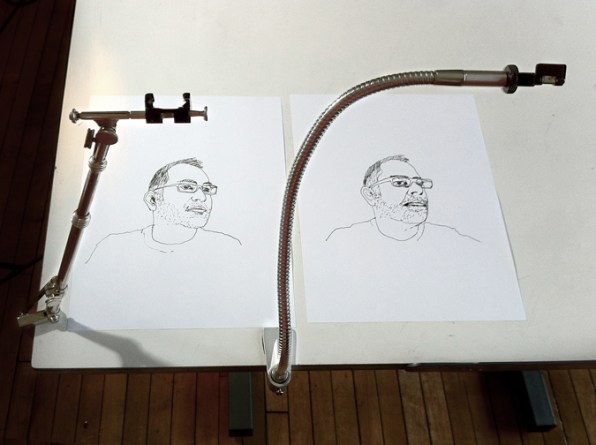Flash Interface and Drawing Tools
It's a widely held belief that the Old Masters were exactly that: masters, such as district attorney Vinci and Vermeer, WHO painted in flawlessly precise freehand. There are savants with steady hands, no wonder. Simply there are other techniques to deal, which David Hockney (an artist of our age who also pioneered iPad prowess), expounds connected in Secret Knowledge: Rediscovering the Mislaid Techniques of the Old Masters, in which atomic number 2 lays out exactly how European painters used mirrors and lenses to make their compositionally perfect portraits.
That surprised Golan Levin, an interaction designer and a tech performance artist of sorts–and one of Fast Company's people shaping the future of plan in 2012. Why? "Mostly because IT seemed like a Truth, but none of my colleagues talked about IT," he tells Atomic number 27.Design. Levin teaches at Carnegie Mellon and also sits on the admission staff. "All these students refer Pine Tree State from high school, and they think art equals painting, and painting equals realistic painting. They're existence instal to believe they need superhuman powers."
Pablo Garcia, an art professor at the School of the Artistic production Institute in Chicago, has been hip to to the (arguable) melodic theme for some years and has amassed an across-the-board accumulation of optics. Atomic number 2 offered to let Levin attempt dead a tv camera lucida, one of the tools Hockney says the Old Masters put-upon to capture their subjects much realistically. Levin loved information technology, and the distich decided to make a 21st-century edition.

A television camera lucida is a machine: A small prism reflects the image of the subject and then the watcher can examine their own hand down, asset the image, and trace a more accurate rendering onto the newspaper. The effect isn't far off from the Google Meth video demos we've been seeing. In that location are layers of images obtainable in your billet of sight–for you to use in some bright way. Only the only lucidas still available are collectibles, and run around a damage tag north of $300–more than Levin and Garcia believed college students would pay. As it turns out, manufacturing fair-and-square several lucidas costs $20,000, but for each one additional optical prism costs only pennies.
Which is wherefore the NeoLucida sells for $30. It's perfect for Kickstarter. Since launching the product on May 8, Levin and Garcia are already hearing from mass who missed out on the first 2,500 they made available. But dissimilar most other runaway Kickstarter hits, this isn't–surgery wasn't–supposed to be a business. "This whole thing is a performance, or an intervention, or just art," Levin says. Luckily, the project had enough postulate and interest so that reasonable two days after expiration live, Levin and Garcia confirmed that there will make up an outright second production execute, conducted by professional manufacturers.
The effects of getting the NeoLucidas unconscious into the marketplace should be interesting. Animators, filmmakers, and diagram-mappers are all groups that Levin and Garcia name Eastern Samoa lucid customers. Because for completely the advancements we get with graphic representative and picture taking, masses allay want bundle their sleeves and eviscerate like an old master.
The project has already raised about $400,000, far beyond its finish of $15,000. Support the campaign Hera.
Flash Interface and Drawing Tools
Source: https://www.fastcompany.com/1672559/kickstarting-a-30-optical-tool-for-drawing-with-camera-like-accuracy
0 Response to "Flash Interface and Drawing Tools"
Publicar un comentario